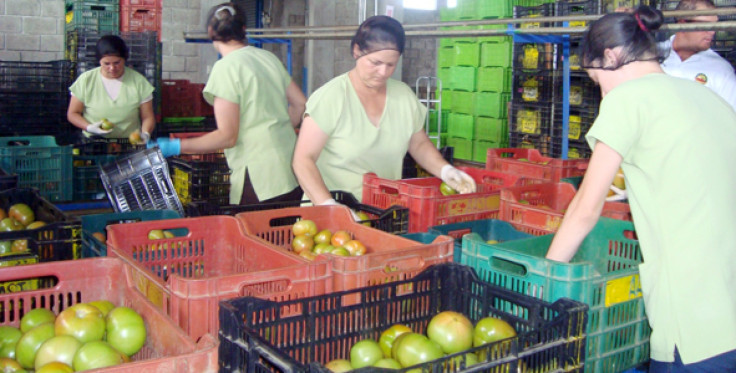The High Price Of Bad Roads And Slow Border Crossings: Obstacles Harming Agricutural Exports Within Central America

Exports of fresh produce and agriculture are a crucial component of Central America’s economy -- recently, the region (led by Guatemala and Costa Rica) exported between $9.3 billion and $9.8 billion in agricultural produce annually.
Costa Rica, a nation of less than 5 million people and about the size of the state of West Virginia, is the world's largest exporter of pineapples, with more than 1.7 million tons of the fruit having been sold in 2011, according to the World Bank. However, trade between the various states of Central America has been badly hurt by the poor condition of rural roads, aging infrastructure, high fuel costs, lengthy customs procedures at national borders and excessive delays at ports of departure.
According to The Observatory of Economic Complexity, almost half of Costa Rica’s total exports went to the U.S. (37.3 percent) and the Netherlands (9.6 percent). Neighbors like Panama and Nicaragua accounted for only 2 to 3 percent. For perishable goods such as Nicaraguan beef, Guatemalan green beans and Honduran organic coffee, delays can ruin whole shipments, whether they are are going overseas to markets in the U.S. and Europe or to other Central American customers. “Bottlenecks in logistical chains have a clear and measurable impact on the volume and quality of the perishable agricultural products that are finally delivered,” said Felipe Jaramillo, the World Bank’s country director for Central America.
Consider what happens when Costa Rica transports tomatoes -- the country has just started shipping the red fruit to the north, but the tomato trade with its Central Americans neighbors faces ridiculous obstacles. As absurd as it may seem, it is more expensive to take tomatoes from San José, Costa Rica, to Managua, Nicaragua, than to California -- although the distance is 12 times further. (The distance between San José and Managua totals some 430 kilometers, or 267 miles; between San José and its namesake city in California, it's 5,400 kilometers.)
The World Bank noted that for a large tomato grower in Costa Rica, the logistic costs of exporting the product (including traveling on unpaved roads, custom duties and other expenses) are nearly $0.15 per kilogram. Making things worse, once the truck reaches the busy border post at Peñas Blancas between Costa Rica and Nicaragua, the cost is nearly doubled (by another $0.14 per kg) due to a long wait at the crossing -- an average of 10 hours. Borders at other parts of Central America can be even longer.
Costa Rica produces more than 60,000 metric tons of tomatoes every year with much of this production sent to Nicaragua, its northern neighbor -- but the costs of making this short journey are exceedingly high. The time it takes to travel from one destination to another is not only affected by unpredictable customs procedures, the World Bank said, but by other factors too: congestion in and around urban areas, the impossibility of traveling at night due to public safety concerns and poor road infrastructure. “At the same time, regional roads are also vulnerable to natural disasters, which put limits on access roads, especially unpaved ones,” the Bank added.
The World Bank estimates that the transportation costs within Latin America and the Caribbean is between two and four times higher than such costs in the OECD countries.
Overall, costs of transportation and tariffs can make up to 30 percent of the final cost of exports for large producers (as high as 50 percent for smaller growers), said the World Bank study. “The obstacles hurt mainly small producers,” Jaramillo said. Hasan Tuluy, the World Bank’s regional vice president for Latin America and the Caribbean, warned that the internal trade in the region has a “long way to go.”
The authors of the World Bank report offered a number of solutions, including making custom procedures more efficient by “requesting countries to publish their preventive customs inspections in advance,” and modernize and harmonize regional customs systems by “connecting them to the sanitary inspection and quarantine process in each country.”
“The success of agricultural trade, particularly which of perishables, depends on the efficiency of related logistical systems and the capacity to connect the global supply chain in an effective and reliable manner,” the World Bank report added.
© Copyright IBTimes 2024. All rights reserved.











